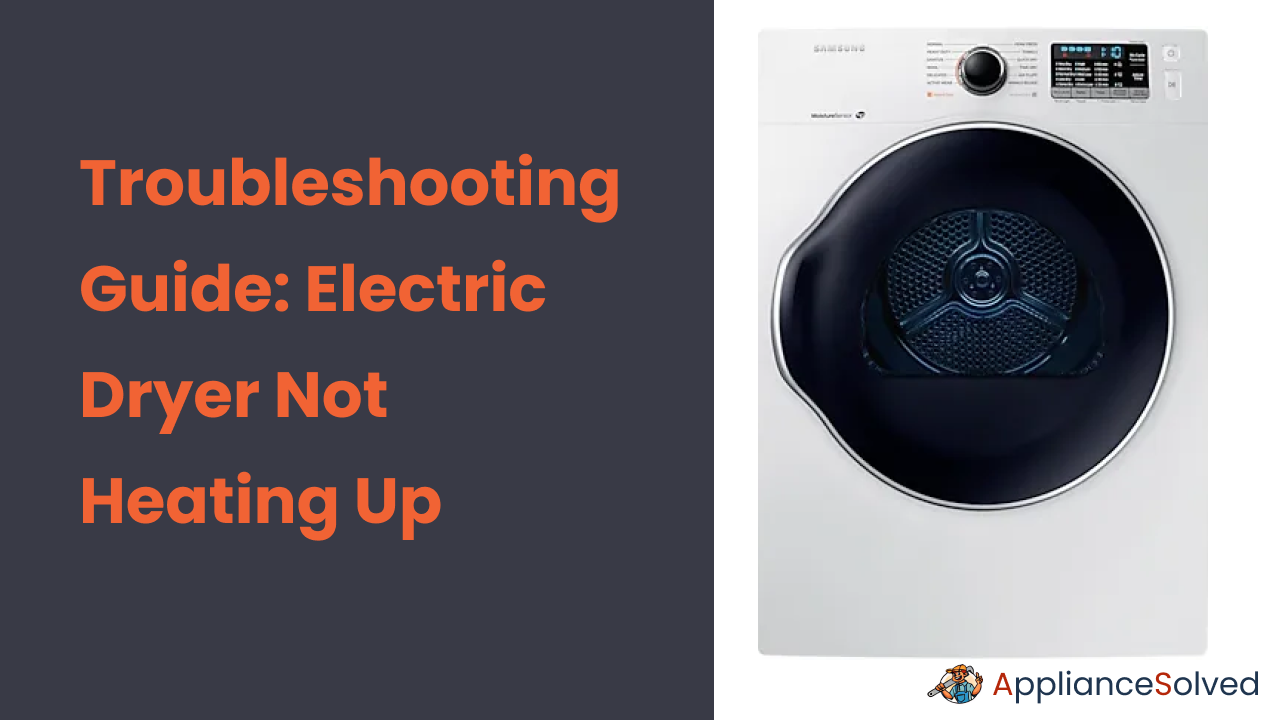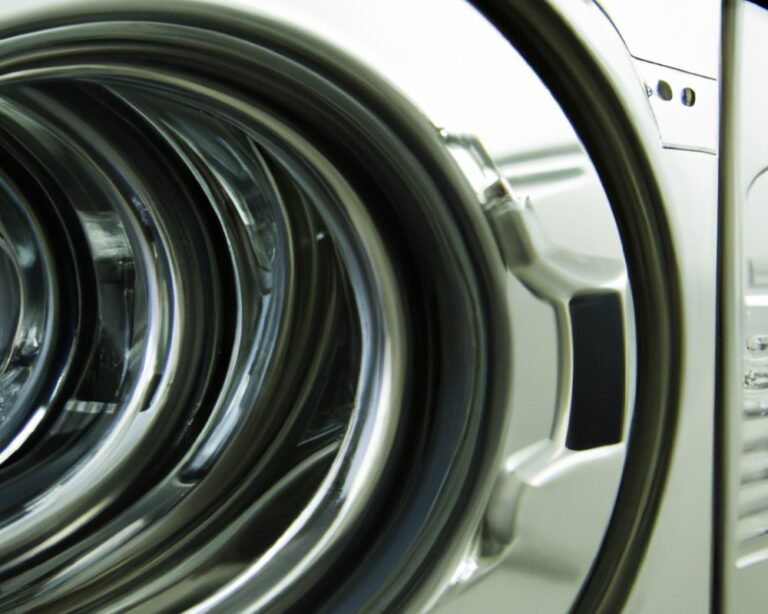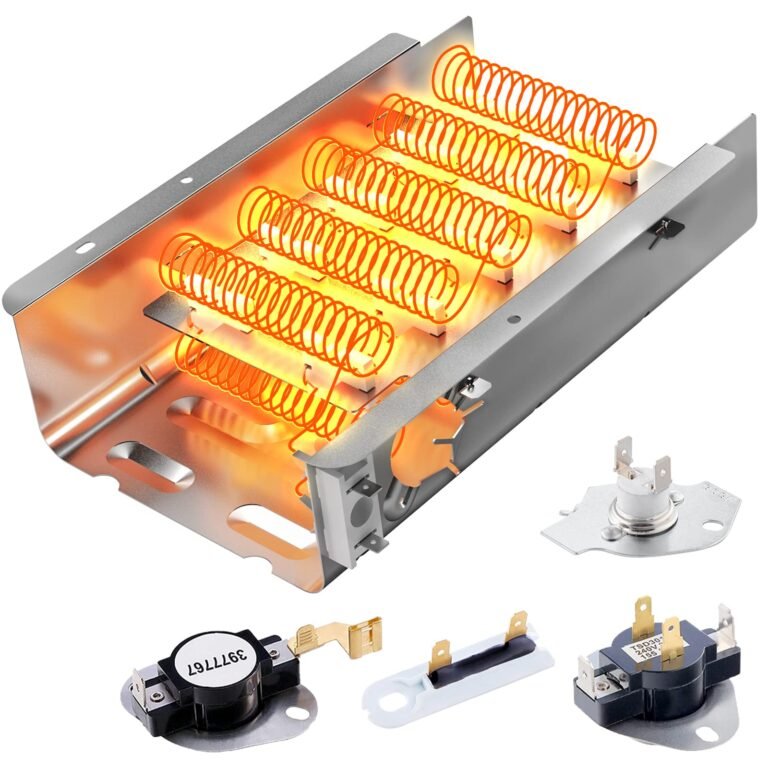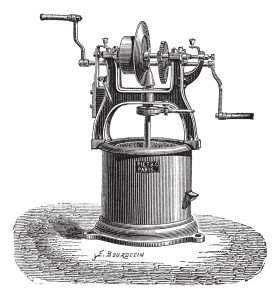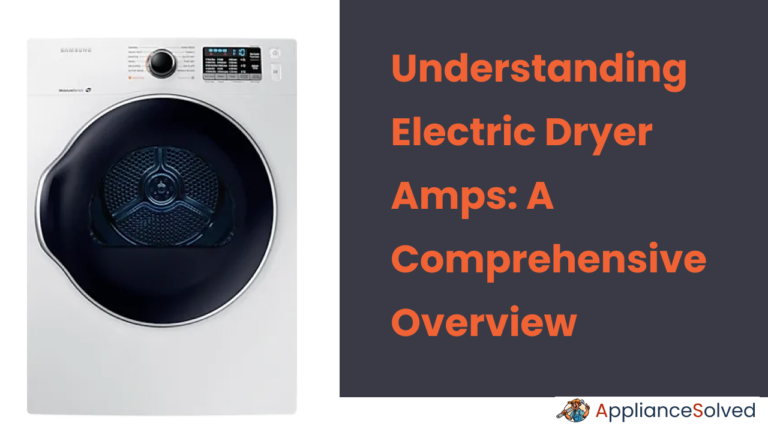Troubleshooting Guide: Electric Dryer Not Heating Up
A functioning electric dryer is a cornerstone of modern convenience, simplifying the laundry process and ensuring our clothes are clean and ready to wear. However, when the electric dryer not heating, it can cause significant frustration and disruption to daily routines.
This comprehensive guide is designed to assist you in troubleshooting and rectifying the issue of your electric dryer not heating up as it should. By addressing common problems, understanding the underlying causes, and providing step-by-step solutions, we aim to empower you to restore your dryer’s optimal performance without unnecessary hassle or expenses.
What Happens When an Electric Dryer Stops Heating?
The lack of heat in an electric dryer can lead to damp, unpleasantly cold clothes even after a full drying cycle. This issue can stem from various components within the dryer system, making it crucial to diagnose and resolve the problem promptly.
Why is my electric dryer not getting hot?
If your electric dryer is not heating, there could be several possible reasons for this issue. Here’s a step-by-step troubleshooting guide to help you identify and potentially fix the problem:
- Check Power Supply: Make sure the dryer is properly plugged in and that the circuit breaker or fuse controlling the dryer’s electrical outlet hasn’t tripped or blown.
- Check Dryer Settings: Ensure that the dryer settings are appropriate for the load you’re drying. Some settings might not use heat, such as “Air Fluff” or “Cool Down.” Make sure you’re selecting a setting that should produce heat.
- Lint Filter: A clogged or dirty lint filter can restrict airflow and cause overheating, which might lead to the dryer not heating properly. Clean the lint filter before every load.
- Ventilation: A blocked or restricted dryer vent can prevent proper airflow, causing the dryer to overheat and not heat effectively. Check the vent for any obstructions and make sure it’s clear.
- Heating Element: The heating element is the component that actually generates heat. It can become faulty over time. Use a multimeter to check if the heating element has continuity. If there’s no continuity, it’s likely defective and needs replacement.
- Thermal Fuse: The thermal fuse is a safety device that prevents the dryer from overheating. If it blows, the dryer won’t heat. Test the thermal fuse for continuity using a multimeter and replace it if necessary.
- Thermostat: Modern dryers have multiple thermostats to regulate temperature. If one of these thermostats is faulty, it could prevent the dryer from heating properly. Test them for continuity and replace any that are malfunctioning.
- Timer or Control Board: If the timer or control board that manages the dryer’s functions is defective, it might not send the signal to the heating element to turn on. Check if the timer advances properly and consider testing the control board if needed.
- Wiring: Inspect the wiring connections within the dryer for any loose or damaged wires. Faulty wiring can disrupt the electrical circuit and prevent the dryer from heating.
- Door Switch: Some dryers have a door switch that needs to be engaged for the dryer to start heating. If the switch is faulty, the dryer might not heat. Test the door switch for continuity and replace if necessary.
- Professional Help: If you’re not comfortable performing these checks yourself or if the issue persists after trying these steps, it’s advisable to contact a professional appliance repair technician to diagnose and fix the problem.
This is similar to gas dryer not heating issue, Remember to unplug the dryer before attempting any troubleshooting or repair work to ensure your safety.
Understanding the Basics of an Electric Dryer:
What are the Key Components of an Electric Dryer?
An electric dryer is a complex system comprised of several key components that work together to generate heat and dry your clothes efficiently. These components include the heating element, thermostat, thermal fuse, and more. The heating element is responsible for generating the heat needed to dry your clothes, while the thermostat ensures that the temperature remains within a safe and effective range. The thermal fuse acts as a safety mechanism, preventing overheating and potential fire hazards.
How Does the Heating Process Work in an Electric Dryer?

The heating process in an electric dryer begins when you select a drying cycle and press the start button. As the dryer drum rotates, cold air is drawn in and heated by the heating element. The warm air then circulates through the drum, absorbing moisture from the wet clothes. As the air becomes saturated with moisture, it exits the drum, and fresh, dry air is drawn in to continue the cycle. This continuous exchange of warm and cool air gradually dries the clothes.
Why is Proper Heating Essential for Effective Clothes Drying?
Proper heating is pivotal for effective clothes drying for several reasons. Firstly, the heat helps to evaporate the moisture present in the clothes, allowing them to dry thoroughly. Secondly, adequate heat ensures that the drying process is efficient, saving both time and energy. Lastly, consistent heating prevents the growth of mold and mildew, which can occur if clothes remain damp for extended periods.
Heating Element Issues: Why is the Electric Dryer Not Heating Up?

How Does a Faulty Heating Element Affect Dryer Heating?
The heating element is the workhorse of your electric dryer, responsible for generating the heat necessary to dry your clothes. Over time, these elements can deteriorate or burn out, resulting in insufficient heat production. If your dryer’s heating element is faulty, you may notice that your clothes are taking longer to dry, or they remain damp at the end of a cycle.
What are the Signs of a Damaged Heating Element?
Identifying a damaged heating element is crucial for effective troubleshooting. Look for visual cues like visible breaks or dark spots on the element’s surface. A damaged element might also emit a burnt smell when the dryer is running. Additionally, if your dryer’s temperature settings seem ineffective or inconsistent, a faulty heating element could be the culprit.
How Can You Visually Inspect and Test the Heating Element’s Continuity?
Before attempting to replace the heating element, it’s wise to visually inspect and test its continuity with a multimeter. Begin by unplugging the dryer and locating the heating element, usually found behind the front or rear panel. Carefully detach the wires connected to the element and visually examine its condition. If there are visible signs of damage, such as breaks or discoloration, it’s likely the culprit behind the heating issue.
To test the heating element’s continuity, set your multimeter to the resistance or continuity mode. Touch the multimeter probes to the element’s terminals. If the reading on the multimeter shows infinite resistance, the element is likely faulty and needs replacement. However, if the reading is close to zero, the heating element is functioning correctly.
Thermostat Problems: How Do Thermostats Affect Heating?

What Role Do Thermostats Play in Dryer Temperature Regulation?
Thermostats are essential components that regulate the temperature inside your electric dryer. When functioning correctly, they ensure that the dryer operates within safe temperature ranges for effective and safe clothes drying. However, if a thermostat malfunctions, it can lead to heating inconsistencies or a complete lack of heat.
How Do Thermostat Malfunctions Impact Heating Function?
Thermostats are designed to monitor the temperature of the dryer and signal the heating element to turn on or off accordingly. When a thermostat fails, it may inaccurately detect temperatures, causing the heating element to either stay on constantly or not turn on at all. This results in clothes either burning due to excessive heat or remaining damp due to insufficient warmth.
How Can You Test the Accuracy of Thermostats?
Testing thermostats for accuracy involves using a multimeter to measure their resistance and determine if they are opening and closing at the appropriate temperatures. Begin by accessing the thermostat, which is often located near the dryer’s heating element. Carefully disconnect the wires and set your multimeter to the resistance or continuity mode. Touch the multimeter probes to the thermostat’s terminals and note the resistance reading.
Consult your dryer’s user manual to find the recommended resistance values for your specific thermostat model. If the reading deviates significantly from the recommended values, it indicates a faulty thermostat that needs replacement.
Thermal Fuse Failures: Why is the Thermal Fuse Important?

What is the Purpose of the Thermal Fuse in a Dryer?
The thermal fuse serves as a critical safety component in your electric dryer. Its primary purpose is to prevent overheating, which could lead to potential fire hazards. When the dryer’s temperature exceeds a safe level, the thermal fuse breaks the electrical connection, shutting down the dryer’s heating system.
How Does a Tripped Thermal Fuse Cause Heating Issues?
If the thermal fuse becomes tripped due to high temperatures, your electric dryer will lose its heating capability. This safety measure ensures that the dryer doesn’t operate under hazardous conditions, but it also means that even if the rest of the components are functioning properly, the dryer won’t produce heat until the thermal fuse is replaced.
How Can You Locate and Test the Thermal Fuse?
The thermal fuse is usually located on the dryer’s exhaust duct or blower housing. Consult your dryer’s manual or online resources to identify its specific location. To test the thermal fuse, unplug the dryer and use a multimeter to check for continuity. Set the multimeter to the continuity mode and touch its probes to the thermal fuse’s terminals. If there’s no continuity, the thermal fuse has tripped and needs replacement.
Step-by-Step Troubleshooting Guide:
Safety Precautions: Why is it Important to Unplug the Dryer Before Troubleshooting?
Before embarking on any troubleshooting steps, your safety is paramount. Unplugging the dryer from the electrical outlet eliminates the risk of electrical shock or accidental activation of the heating elements during inspection and testing. Additionally, consider wearing safety gloves and protective eyewear to minimize any potential risks while handling components.
Visual Inspection: What Visible Signs of Damage or Burning Should You Look For?
A thorough visual inspection can often provide valuable clues about the cause of your electric dryer’s heating problem. Carefully examine the heating element, thermostat, and thermal fuse for any signs of physical damage, such as breaks, burns, or discoloration. If you notice any of these signs, it’s likely that the affected component is contributing to the heating issue.
Testing Components: How Can You Use a Multimeter to Test Heating Element, Thermostat, and Thermal Fuse?
A multimeter is a valuable tool for diagnosing electrical issues within your dryer. To test a component, start by setting the multimeter to the appropriate mode (resistance or continuity). Carefully disconnect the wires from the component, then touch the multimeter probes to the terminals. If the multimeter reading deviates significantly from the expected values or shows infinite resistance, it’s a strong indicator that the component is faulty and needs replacement.
Replacing Faulty Parts: Where Can You Find Reliable Replacement Parts?
When it comes to replacing faulty components in your electric dryer, sourcing reliable replacement parts is crucial. Look for reputable appliance parts suppliers, both online and at local stores. Manufacturers’ websites, authorized dealers, and certified repair centers are excellent places to start your search. Once you’ve obtained the replacement parts, follow the manufacturer’s instructions or seek professional guidance to ensure correct installation.
How do you fix a dryer that is not heating?
To repair a non-heating electric dryer:
- Check power supply and circuit breaker.
- Clean lint filter and inspect vents for blockages.
- Test and replace faulty components like heating element, thermal fuse, thermostats, timer, or control board.
- Examine wiring for damage or loose connections.
- Ensure proper door switch functionality.
- For persistent issues, consult a professional repair technician
Preventive Measures:
Regular Maintenance: Why is Cleaning Lint Traps and Dryer Vents Important for Dryer Maintenance?
Regular maintenance plays a significant role in preventing heating issues and ensuring your electric dryer’s longevity. Lint traps and dryer vents can become clogged over time, obstructing airflow and causing the dryer to overheat. This not only compromises drying efficiency but also poses a fire hazard. Clean the lint trap before or after each load and periodically inspect and clean the dryer vent to maintain proper airflow and prevent lint buildup.
How Does Proper Maintenance Extend the Lifespan of Dryer Components?
Routine maintenance not only prevents heating problems but also extends the lifespan of various dryer components. When the heating element, thermostat, and thermal fuse are free from excessive heat and stress caused by poor ventilation, they are more likely to function optimally over the long term. Regular cleaning and upkeep reduce wear and tear, helping you avoid costly repairs or replacements.
Proper Usage:
What Tips Can You Share for Using the Dryer Efficiently?
Efficient dryer usage can significantly contribute to maintaining proper heating and overall functionality. First, avoid overloading the dryer, as this can hinder airflow and heat distribution. Second, consider separating heavy items from lighter ones to ensure even drying. Finally, avoid drying items that are excessively wet, as they can prolong the drying cycle and strain the heating system.
How Can Users Prevent Overloading and Overheating Issues?
Overloading the dryer not only prolongs drying times but also strains the heating element and other components. To prevent overheating issues, ensure that there’s ample space for clothes to tumble freely. Additionally, avoid running the dryer for extended periods; instead, opt for shorter cycles and check the progress periodically.
When to Seek Professional Help:
In Which Situations is Professional Assistance Recommended?
While this guide equips you with valuable troubleshooting steps, there are instances where seeking professional assistance is advisable. If you encounter complex electrical issues, face challenges in diagnosing the problem accurately, or feel uncomfortable working with electrical components, it’s best to contact a qualified appliance repair technician.
Why is it Advisable to Contact Experts for Complex Repairs or Electrical Issues?
Complex repairs and electrical issues can pose risks to your safety and may require specialized tools and expertise. Professionals are trained to diagnose intricate problems accurately, recommend appropriate solutions, and perform repairs safely. Attempting complex repairs without the necessary skills can worsen the issue and may compromise your safety.
FAQ Electric dryer not heating
What causes an electric dryer not to heat?
An electric dryer may fail to heat due to a faulty heating element, blown thermal fuse, malfunctioning thermostats, timer or control board issues, blocked vents restricting airflow, or power supply problems like a tripped circuit breaker or blown fuse.
What does it mean when a clothes dryer is not heating?
When a clothes dryer doesn’t heat, it indicates the appliance can’t produce necessary heat for drying. This could result from a faulty heating element, blown thermal fuse, malfunctioning thermostats, electrical problems, or restricted airflow. Accurate troubleshooting is vital to identify and resolve the underlying issue.
How do I know if my dryer thermal fuse is blown?
To check a blown thermal fuse:
- Unplug the dryer for safety.
- Locate the thermal fuse (usually near heating element).
- Test fuse continuity using a multimeter.
- If no continuity, replace the thermal fuse.
Why is my dryer blowing cold air?
If your dryer is blowing cold air instead of producing heat, several potential issues could be causing this problem:
- Heating Element Failure: The heating element is responsible for generating heat in the dryer. If it’s malfunctioning or burned out, the dryer will only blow cold air. A damaged heating element requires replacement.
- Thermal Fuse Blown: The thermal fuse is a safety device that prevents the dryer from overheating. If it blows, it interrupts the heating circuit, resulting in cold air. Check the thermal fuse for continuity and replace if necessary.
- Faulty Thermostats: Dryers have multiple thermostats to regulate temperature. If any of these thermostats are faulty, they might not signal the heating element to activate. Test and replace malfunctioning thermostats.
- Timer or Control Board Issues: A malfunctioning timer or control board can prevent the heating element from turning on. Check if the timer advances correctly, and test the control board if needed.
- Clogged Ventilation: Restricted airflow due to a clogged vent or lint filter can lead to overheating and activation of safety mechanisms that result in cold air blowing. Clean the lint filter and check for vent blockages.
- Electrical Problems: Check the power supply, circuit breaker, and electrical connections. A disrupted power supply can lead to cold air blowing.
- High-Limit Thermostat: Some dryers have a high-limit thermostat that turns off the heating element if the dryer overheats. If this thermostat is faulty, it might interrupt the heating cycle prematurely.
- Incorrect Settings: Ensure you’ve selected a heating cycle and not an “Air Fluff” or “Cool Down” setting, which doesn’t use heat.
- Door Switch Issue: Some dryers won’t produce heat if the door switch is faulty or not engaged properly. Test the door switch for continuity and proper functioning.
- Gas Dryer Conversion: If your dryer has the option to use either gas or electricity, make sure it’s configured for the correct power source.
- Professional Assistance: If you’re unable to identify or fix the issue yourself, it’s advisable to contact a professional appliance technician for diagnosis and repair.
Remember to unplug the dryer before conducting any checks or repairs, and if you’re uncertain, seek expert assistance to avoid potential hazards.
Conclusion
Resolving the issue of an electric dryer not heating requires a systematic approach involving understanding the components, thorough troubleshooting, and implementing preventive measures. By following the steps outlined in this guide and prioritizing safety, you can effectively diagnose and address heating problems, ensuring your electric dryer continues to provide efficient and reliable performance.

